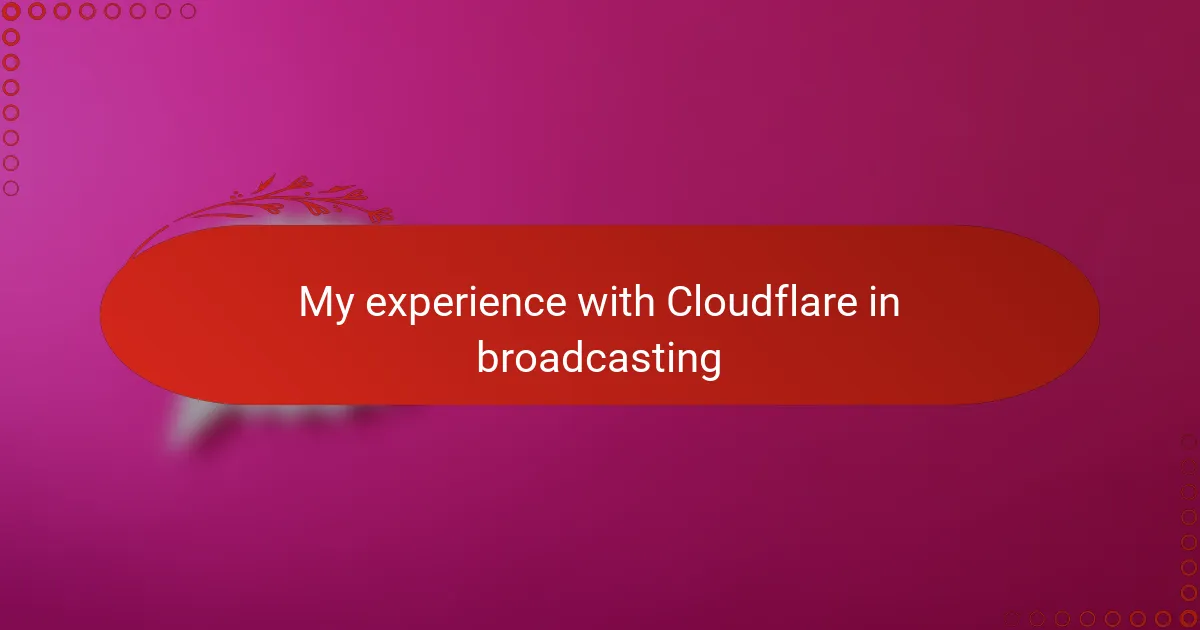Key takeaways
- Cloudflare enhances streaming quality and reliability for broadcasters by reducing latency and preventing buffering issues.
- The platform’s CDN distributes content globally, ensuring consistent audio quality for listeners, regardless of their location.
- Security features protect against DDoS attacks and other threats, allowing broadcasters to focus on content without fear of outages.
- Real-time analytics provide insights into audience engagement, enabling broadcasters to optimize their streaming performance effectively.
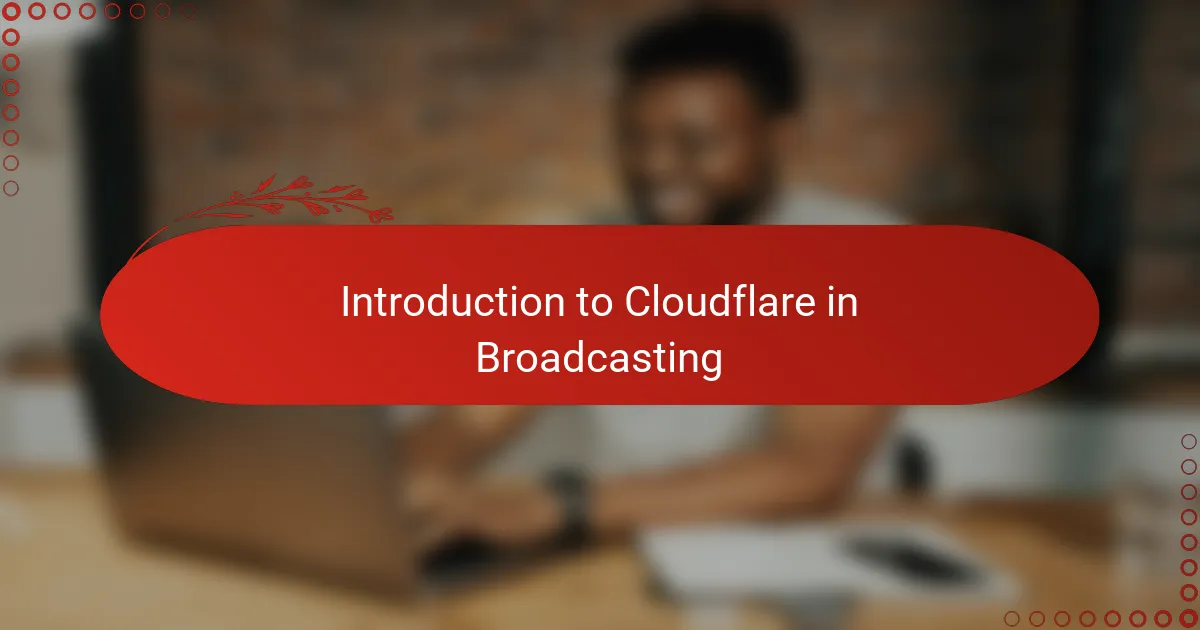
Introduction to Cloudflare in Broadcasting
When I first heard about Cloudflare, I wondered how a service known for web security and speed could fit into the world of radio broadcasting. It turns out, Cloudflare’s tools offer much more than just protecting websites—they enhance streaming quality and reliability, which is crucial for keeping listeners tuned in without interruption. Have you ever experienced that frustrating buffering mid-broadcast? That’s exactly what Cloudflare helps to prevent.
In my experience, incorporating Cloudflare into broadcasting felt like adding a safety net for my radio station’s online presence. The platform’s content delivery network (CDN) reduces latency, ensuring streams reach listeners quickly, no matter where they are. It was a relief knowing that behind the scenes, Cloudflare was handling traffic surges and guarding against outages.
Thinking back, I didn’t realize how much modern broadcasting relies on internet infrastructure until Cloudflare showed me its importance. It’s fascinating how broadcasting, traditionally tied to radio waves, now depends heavily on web performance and security. Cloudflare bridges that gap, making it an essential tool for any broadcaster wanting to stay smooth and connected in today’s digital age.
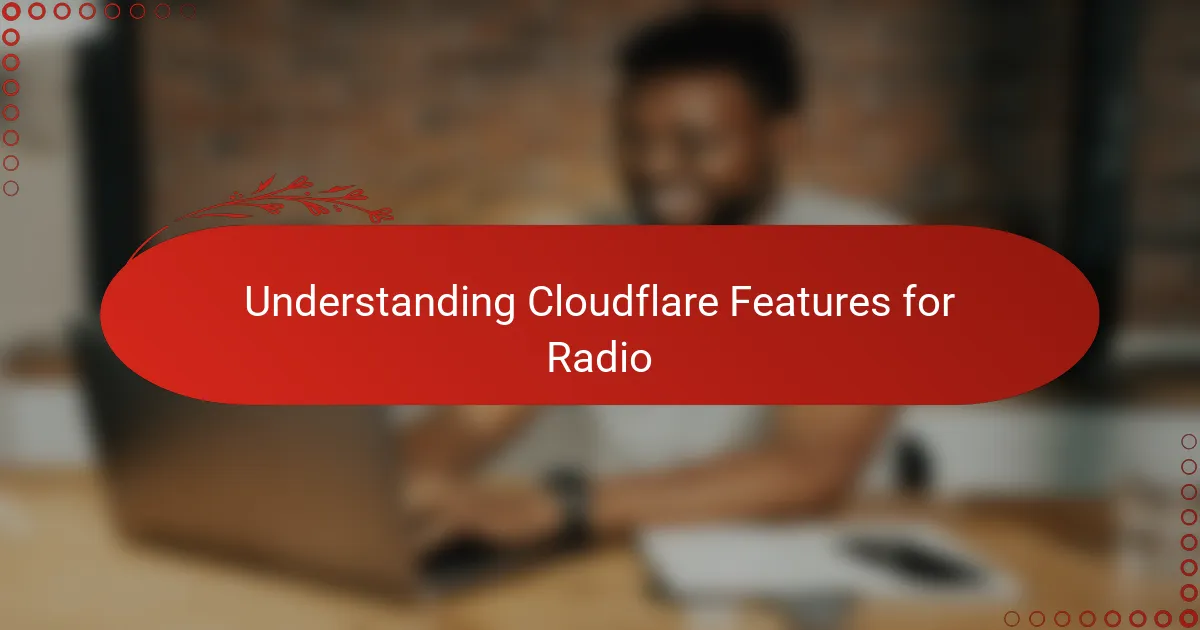
Understanding Cloudflare Features for Radio
One of the first features I explored with Cloudflare was its CDN, or content delivery network. I remember being impressed by how it distributed my radio stream across multiple servers worldwide, cutting down the wait time for listeners no matter where they tuned in from. Isn’t it amazing how a listener in a remote area can get the same crisp audio as someone in a big city?
Cloudflare’s security tools also caught my attention quickly. I worried about potential DDoS attacks — those bad traffic floods that can knock your station offline. Knowing Cloudflare was actively monitoring and filtering threats gave me peace of mind, allowing me to focus on what really matters: the content.
Finally, the analytics Cloudflare provides made me rethink how I understand my audience. It was eye-opening to see real-time data about connections and load times, helping me tweak settings to keep the broadcast smooth. Have you ever wished you had a backstage pass to your own stream’s performance? That’s exactly what these insights felt like to me.

Setting Up Cloudflare for Radio Stations
Setting up Cloudflare for my radio station was surprisingly straightforward, but it did require some careful steps. I started by integrating Cloudflare’s DNS into my existing hosting setup, which felt a bit technical at first. Have you ever had that moment where you wonder if you’re about to break something? Thankfully, Cloudflare’s clear instructions made the process smoother than I expected.
One thing I quickly learned was the importance of configuring the caching rules correctly. At first, I let the default settings run, but that caused some delays in live audio streaming. Adjusting those settings to prioritize real-time content drastically improved the listener experience. It felt like I’d unlocked a hidden level of performance, and that was incredibly rewarding.
Another key step was setting up the security features to protect against unexpected traffic spikes or malicious attacks. I remember the relief I felt after enabling Rate Limiting and Firewall rules—it was as if I had finally put a strong lock on the station’s digital front door. Have you ever wished you could just dial down the risk without sacrificing accessibility? Cloudflare made that balance feel achievable.
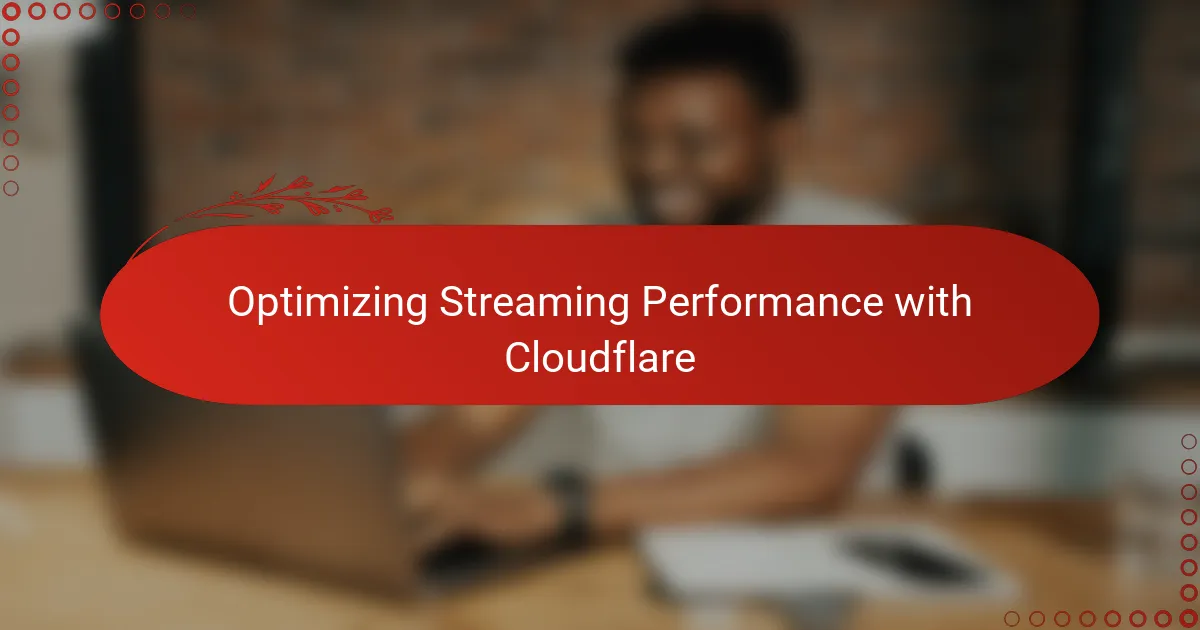
Optimizing Streaming Performance with Cloudflare
Optimizing streaming performance with Cloudflare truly transformed how my broadcast reached listeners. I noticed almost immediately how the intelligent caching and routing minimized buffering, which used to drive me—and my audience—a bit crazy. Have you ever had a listener ask why the sound skips or freezes? Cloudflare helped me put an end to those awkward moments.
What struck me most was how Cloudflare’s automatic load balancing handled sudden spikes without breaking a sweat. During a special event, I braced for technical hiccups, but the stream stayed rock solid. It felt like having an invisible crew working behind the scenes, making sure every listener stayed connected no matter how large the audience grew.
I also appreciated the ability to fine-tune performance settings based on real-time data. Adjusting things like protocol support and edge server preferences had a noticeable impact on stream quality. Have you ever wished your streaming setup had that kind of flexibility without complex tinkering? Cloudflare made those improvements feel both accessible and manageable for someone like me.
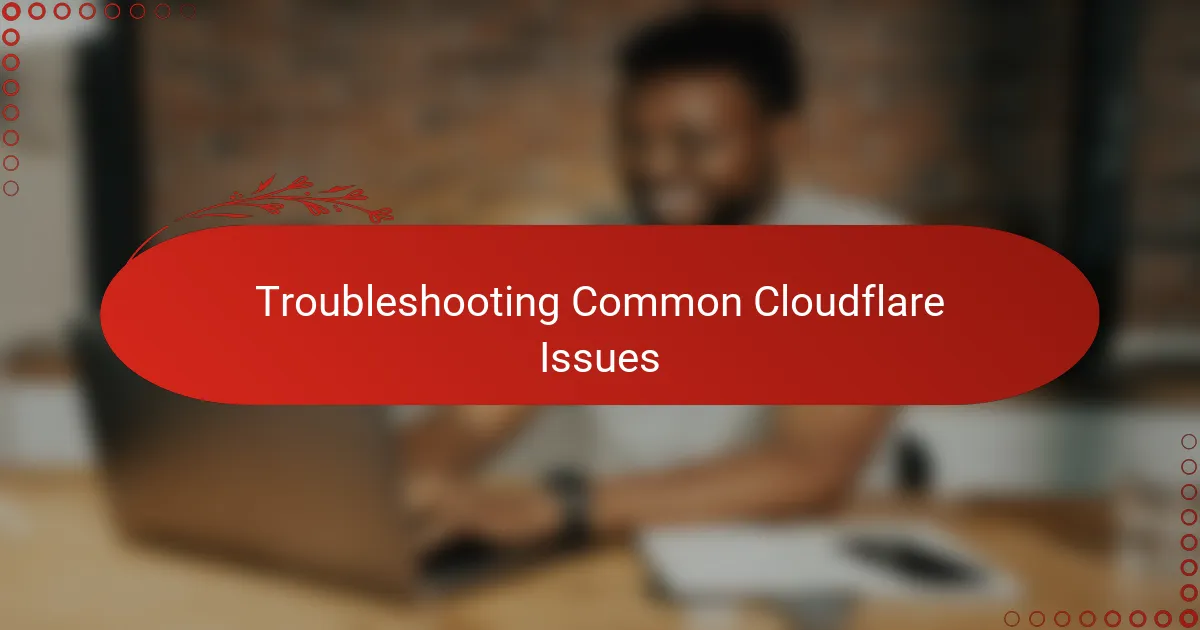
Troubleshooting Common Cloudflare Issues
When I first ran into Cloudflare issues, it was a bit frustrating to figure out why my stream was still buffering despite the CDN. Turns out, sometimes the caching settings can interfere with live audio delivery if not properly adjusted. Have you ever felt stuck, watching your listeners struggle with lag, wondering if it’s your setup or something else? Tweaking the cache rules helped me turn that around.
Another headache I faced was with SSL certificates causing connection errors that left my broadcast unreachable. I learned that mismatched SSL modes between Cloudflare and my server create these issues. Once I aligned those settings, it was like opening a blocked channel—smooth and secure. Sometimes the fix is just a small switch, and you realize how much those technical details matter.
I also encountered occasional firewall blocks that unintentionally cut off legitimate listener traffic. It was tricky at first to balance protection with accessibility. Adjusting the firewall rules after reviewing the logs allowed me to keep threats out without locking out real people. Have you ever wished security could be both tough and friendly? That’s the balance I strived for with Cloudflare’s tools.
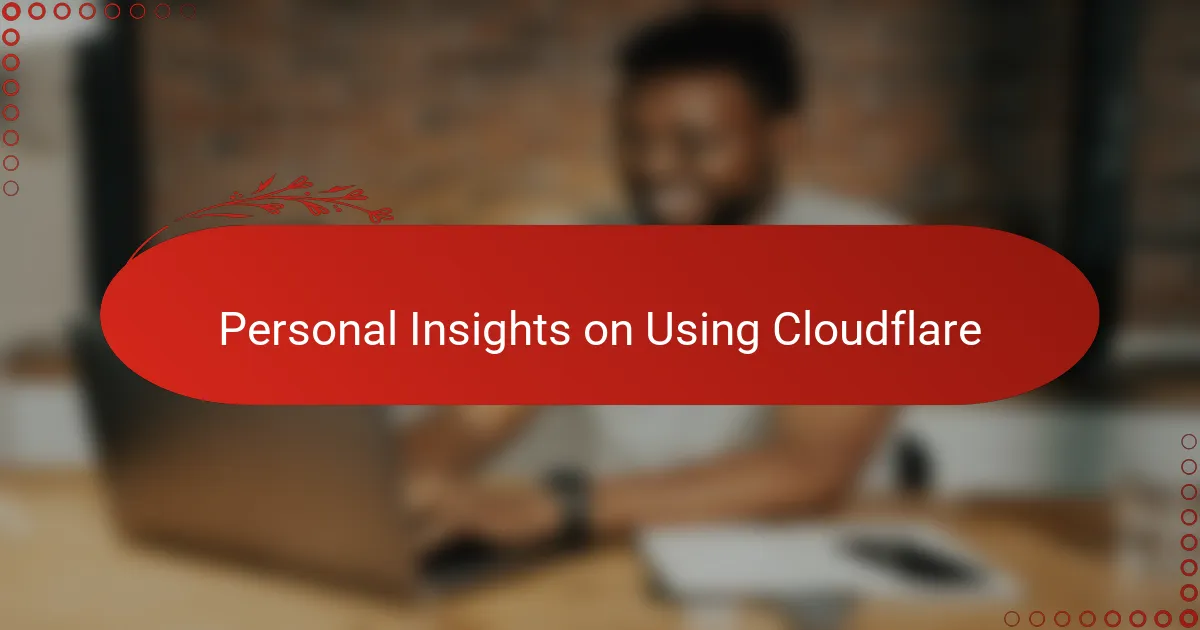
Personal Insights on Using Cloudflare
Using Cloudflare felt like gaining a reliable partner for my broadcast’s online journey. I remember the relief when I saw listeners from all corners connecting smoothly, even during peak hours. It’s amazing how technology can turn a potentially stressful situation into a confident experience.
At one point, I was skeptical about whether implementing security features might slow down my stream. Surprisingly, the integrated protections actually made the broadcast feel safer without any hiccups. Have you ever doubted if security would come at a cost? Cloudflare showed me it doesn’t have to be that way.
What truly stands out to me is how accessible the platform is. Even with limited technical skills, I found myself tweaking settings and seeing instant improvements. That hands-on control made me feel more in charge of my station’s success, which is invaluable in the fast-paced world of broadcasting.
